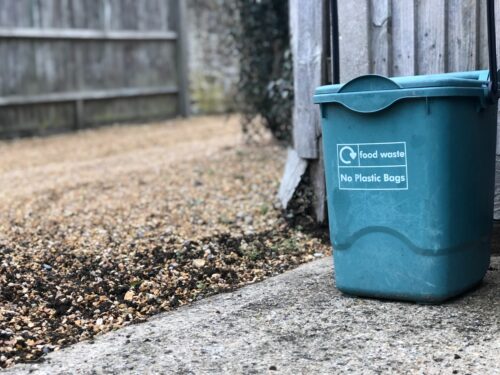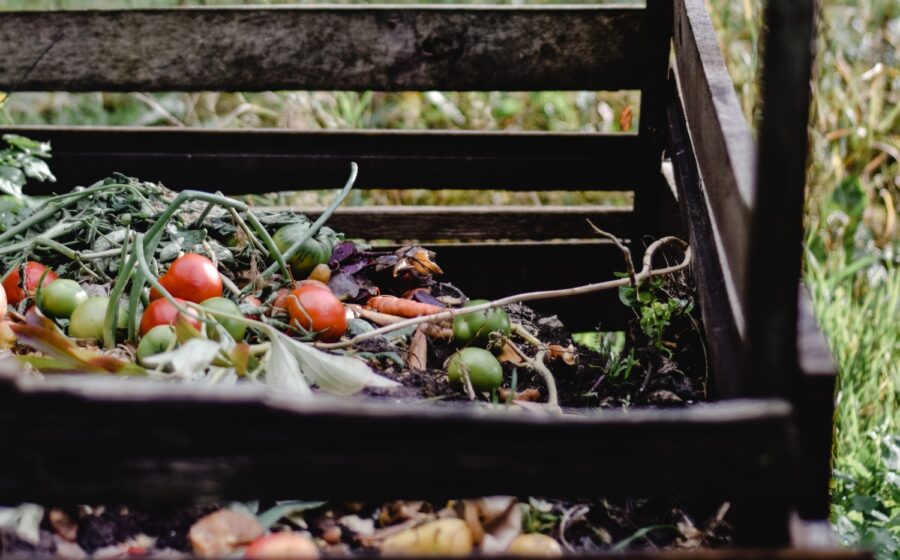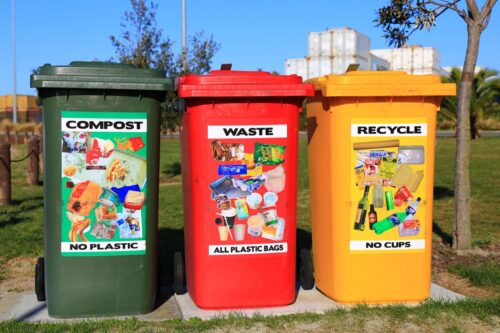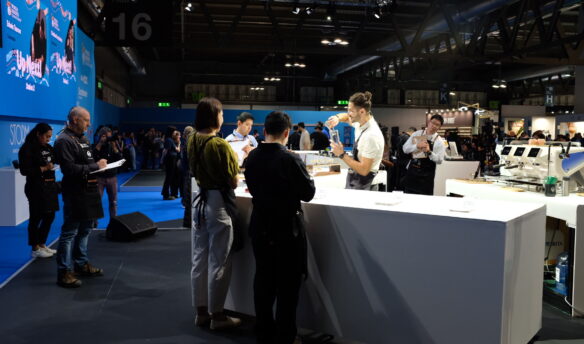“Composting is for everyone,” reads the Compost Coalition website. Compost Coalition is a two-year-old grassroots organization based in Austin, Texas, working with area businesses and residents to divert organic materials from landfills.
The coalition’s colorful home page outlines a variety of refuse eligible for the compost heap: yard waste, kitchen scraps, a carpenter’s wood shavings, a brewer’s spent grains, and, yes, a café’s nitrogen-rich espresso grounds.
Thanks to the Coalition’s Ground to Ground program, targeted specifically at collecting coffee grounds, more than eight tons of coffee grounds are diverted from the region’s landfills each month. Instead of contributing to greenhouse gases by releasing methane into the atmosphere, grounds collected from local businesses get a second life in the soil of urban gardens, where they contribute vital micronutrients and a slow release of nitrogen to hungry plant life.
Most cafes produce pounds of compostable material just through the regular cycle of brewing coffee. Organizations across the nation are making it easier to participate in collection campaigns and find new life for their spent coffee grounds. From established shops to at-home baristas, here’s how one group sparked a composting movement in your neighborhood—and how you can do the same.
Small-Scale Solutions
Heather-Nicole Hoffman saw a need for a better composting program in Austin. Hoffman is a co-founder of the Compost Coalition and noticed that local grocery stores had contracted compost removal services, but smaller businesses were rarely able to afford the same.

“It made me think,” she says, “what about all these little places that can’t afford composting services? They’re on such tight profit lines that they really can’t afford one more thing.”
Hoffman helped build a volunteer network from that realization, and Compost Coalition’s advocacy efforts grew. Ground to Ground came about a year later—through door-to-door campaigns, marketing, and outreach at local gardening events, the word quickly spread.
Soon the initiative received requests from local cafés, restaurants, and even corporate breakrooms with coffee grounds to spare. As more businesses signed up to have their coffee grounds picked up by Ground to Ground volunteers or “coffee captains,” a collaboration with Texas A&M University’s AgriLife Extension Service boosted awareness of the program across the state.
Today more than 20 local businesses are composting through the program, a steadily growing number. “It’s just kicking into high gear,” says Daphne Richards, a horticultural agent for AgriLife Extension Service. “We have a great website … and it seems like every day I get a call from someone wanting to know how they can participate.”
Spread The Message
Compost Coalition’s user-friendly site also offers advice for residents on how to produce less waste, what to compost (“if it grows, it goes”), and a map of the city’s community gardens, recycling centers, and Ground to Ground participation sites. “Everyone who has participated has been very pleased,” says Hoffman of Ground to Ground. “It’s been pretty easy and goes fairly smoothly.”
Simplicity was key to getting the program on its feet: While some coffee shops re-bag grounds in coffee bean packaging, for most of the program’s participants, a bucket exchange keeps things hassle-free.
Four-gallon buckets are stamped with the Ground to Ground seal, filled by baristas and other foodservice workers, set by the door, and taken home by local gardeners.
“When people come in, even if they haven’t participated before, they can just take home a bucket, use the grounds either on their gardens, compost or on the lawn, and return the buckets and do it again,” says Hoffman.
Richards says the program sees “citizens who don’t even garden, but they’ll pick up the grounds and deliver them to their neighborhood community garden.” Because the grounds provide nutrients many commercial fertilizers lack, the relationship is a win-win. “Coffee grounds are slightly acidic,” says Richards, “so in areas with alkaline soil, like Austin, coffee grounds help to lower the soil pH just a bit.”
Composting is still relatively new to Austin, and the city’s recently enacted Universal Recycling Ordinance—which requires all food service businesses to compost by 2016 (2017 for larger companies)—means significant changes for some. But Hoffman hopes Ground to Ground will ease that transition and inspire the community to embrace reuse. “This program is a really easy way for people to get used to the idea, both on the business and consumer sides,” she says. “Coffee grounds are easy—the most they’ll do is mold a little, and they’re not going to get gross, so it’s a good introduction [to composting].”
Ground to Ground isn’t the first program of its kind, or even by that name; a different Ground inspired the founders of Austin’s Ground to Ground to Ground program in Melbourne, Australia. The founder of that program, Shane Genziuk, permitted Austin’s Ground to Ground to continue using the name and his logo (a plant sprouting from a portafilter full of espresso).
Meanwhile, coffee composting efforts are growing in cities across the country: Eugene, Oregon, Fayetteville, Arkansas, and Santa Barbara, California, to name a few. Richards says the potential for composting programs like Ground to Ground is tremendous, and she hopes Austin can be a guide. “There are gardeners in every neighborhood, in every city of the world,” she says. “We’d love to see Ground to Ground spread to other communities, and we’ll help with that any way we can.”
Photo by Eva Bronzini.
This story was originally published on January 19, 2014, and has been updated to reflect Fresh Cup’s current editorial standards.









